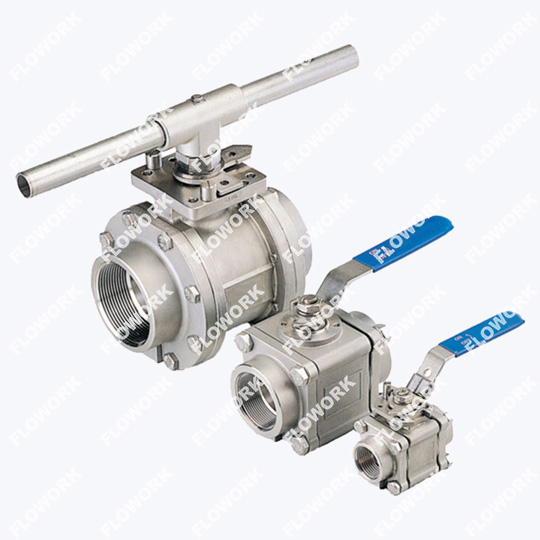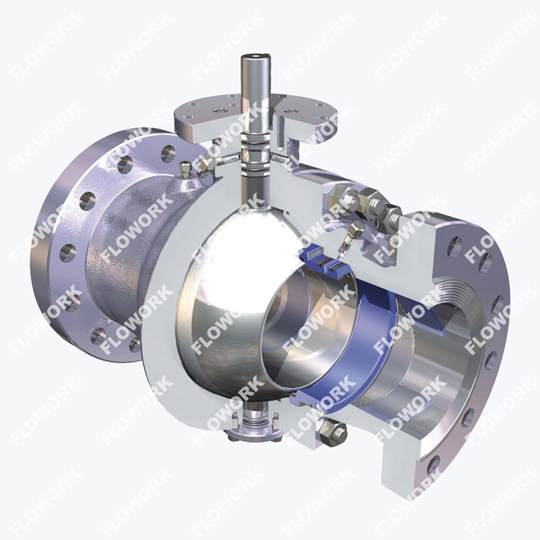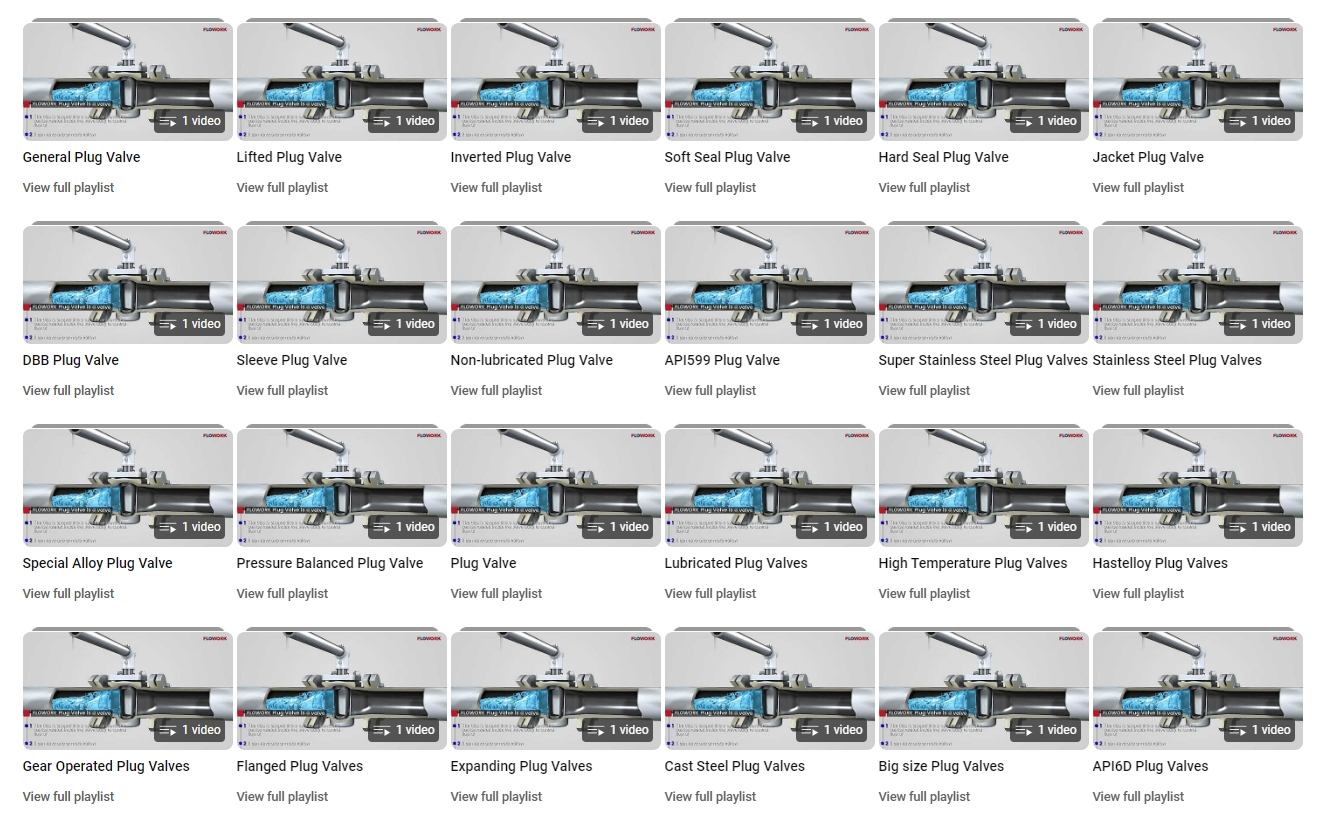What is the difference between fixed and floating ball valves?
In the world of valves, ball valves and float valves each have their place. Although both types of valves play important roles in fluid control, they have their own differences in design, working principles and applications. Next, let me talk to you in depth about the similarities and differences between these two valves.
1. Working principle
The ball valve is named after the ball inside. When the valve is in the open state, the through hole on the ball is aligned with the axis of the pipe, allowing fluid to pass smoothly. When the valve needs to be closed, the handwheel or actuator is rotated to rotate the ball 90 degrees so that the through hole is perpendicular to the axis of the pipeline, thus blocking the fluid.
Float valve, also known as floating ball valve, its working principle is similar to that of ball valve. The difference is that the ball in a float valve is not fixed, but floats freely under fluid pressure. Therefore, when the valve is closed, the ball can automatically find the outlet of the fluid and form a tight seal.

2. Structural characteristics
Ball valve: The structure of the ball valve is relatively simple, consisting of a valve body, a ball, a sealing ring, a valve stem and other components. Its advantages are small size, light weight and easy operation. In addition, ball valves have good sealing performance and low fluid resistance, so they are widely used in various pipeline systems.
Float valve: The structure of the float valve is relatively complex, and there is a certain gap between the ball and the valve seat. This allows the ball to automatically adjust its position during the opening and closing process of the float valve, reducing wear. In addition, the float valve has strong self-cleaning ability and can effectively prevent clogging, globe valve manufacture.
3. Advantages of use
ball valve
(1) Small fluid resistance: Since the diameter of the through hole on the sphere is similar to the diameter of the pipe, the resistance is small when the fluid passes through.
(2) Good sealing performance: The use of elastic sealing rings can ensure the sealing performance of the valve in the closed state.
(3) Long service life: The friction between the ball and the sealing ring is small, so the service life is long.
(4) Easy to operate: It can be operated by manual, electric, pneumatic and other methods.
float valve
(1) Automatic adjustment function: The ball can automatically adjust its position according to the fluid pressure to ensure the sealing performance of the valve in the closed state.
(2) Strong self-cleaning ability: The gap between the ball and the valve seat can prevent clogging and has strong self-cleaning ability.
(3) Reduce wear: The ball can automatically find the best position during the opening and closing process to reduce wear.
(4) Strong adaptability: Float valves can adapt to various fluid media and working pressures, and have strong adaptability, api 6d ball valve.

4. Design concept
The design concept of the ball valve is mainly reflected in its simple structure and ease of use. Its internal spherical design minimizes fluid resistance, thereby ensuring efficient fluid flow. In addition, the ball valve's excellent sealing performance makes it perform well in situations where strict fluid control is required.
The float valve has won the favor of engineers with its unique automatic adjustment function and powerful self-cleaning ability. The idea behind a float valve is to adapt the valve to the fluid, rather than the fluid to the valve. This concept is fully reflected in the structural design of the float valve: the ball can float freely, automatically find the best position, reduce wear and prevent clogging.
5. Comparison of working principles
The working principle of the ball valve mainly relies on the rotation of the ball to control the flow of fluid. When the through hole on the sphere is aligned with the axis of the pipeline, the fluid can pass through smoothly; when the sphere is rotated 90 degrees and the through hole is perpendicular to the axis of the pipeline, the fluid is blocked. This working method allows the ball valve to quickly and accurately control the on and off of the fluid, butterfly valve wholesale.
The working principle of the float valve is more flexible. Its sphere can float freely under fluid pressure, automatically finding the outlet of the fluid and forming a tight seal. This working method enables the float valve to adapt to various fluid media and working pressures, and has strong adaptability.
6. Differences in application scenarios
Due to their different working principles and design concepts, the application scenarios of ball valves and float valves are also different. Due to its simple structure, easy use, and excellent sealing performance, ball valves are widely used in pipeline systems in petroleum, chemical, metallurgy, electric power and other industries to quickly cut off fluids, plug valve supplier.
The float valve, because of its automatic adjustment function and powerful self-cleaning ability, is more suitable for fluid media containing solid particles or fibers, such as sewage treatment, papermaking and other industries. In these industries, the fluid medium easily blocks the valve, but the float valve can effectively prevent blockage and ensure the smooth flow of fluid. In addition, float valves can also perform excellently in situations where automatic flow adjustment is required, such as heating systems, air conditioning systems, etc.
7. Let me make a final summary for everyone.
Ball valves and float valves have their own advantages in design concepts, working principles and application scenarios. In practical applications, I need to select the appropriate valve type based on the specific fluid medium, working pressure, and operating requirements. In the future, with the advancement of technology and the development of the industry, I look forward to seeing more innovative valve designs and technologies emerging to meet increasingly complex and diversified fluid control needs.








